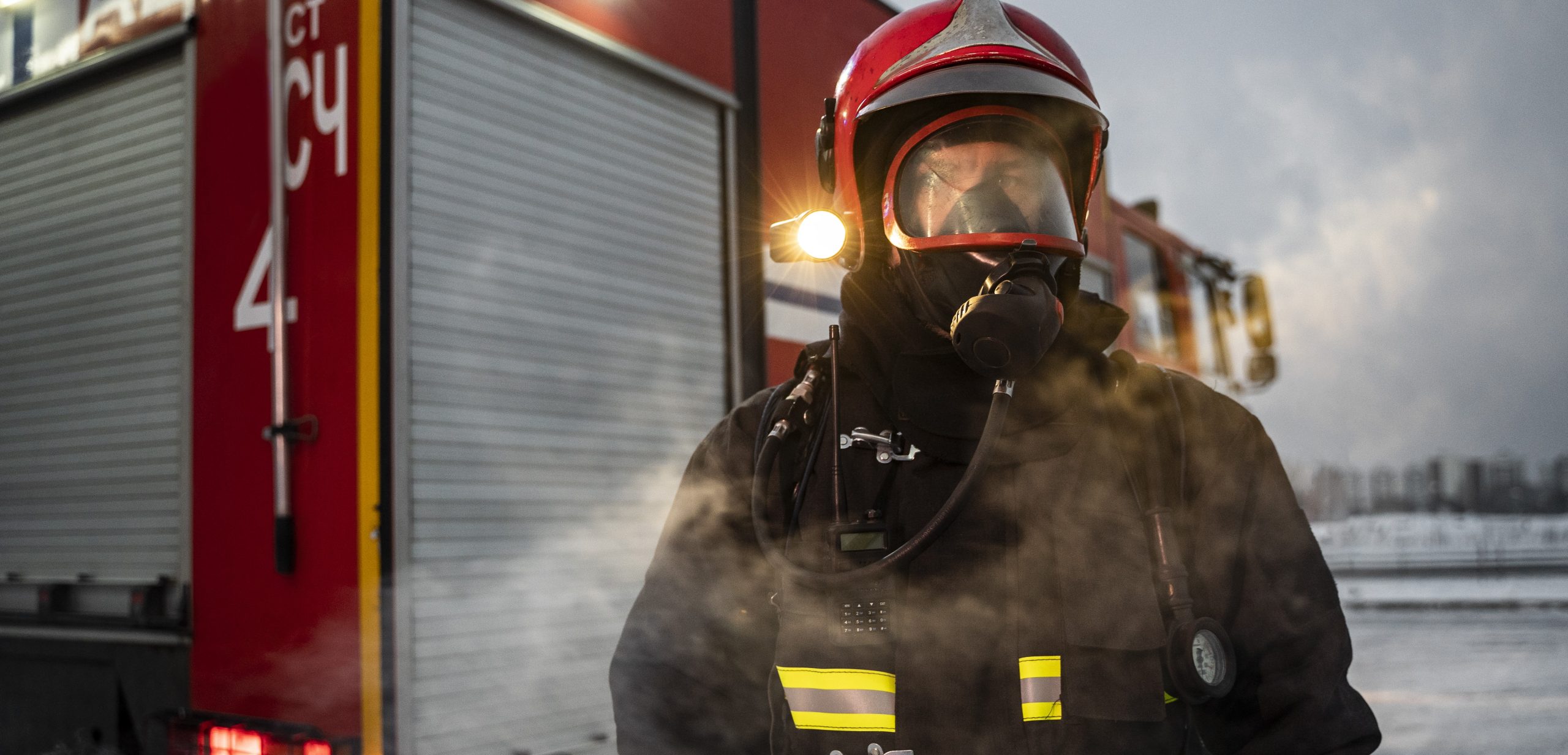Industrial fires pose significant risks not only to workers but also to first responders who bravely confront these emergencies. A recent fire at the Tyson Foods plant in Berryville, Arkansas, highlights the dangers firefighters face when battling fires in facilities handling hazardous materials. At least two dozen firefighters are recovering from chemical burns after the fire.
When fires erupt at manufacturing facilities, it is important for anyone injured due to no fault of their own to understand their legal rights. In the article below, the burn injury lawyers at Kherkher Garcia explore the incident at Tyson, the injuries sustained, the chemical hazards involved, and the potential legal recourse available to affected individuals.
Overview of the Incident
On a Monday evening, January 13, 2025, a fire erupted at the Tyson Foods plant in Berryville, Arkansas, around 7 p.m. Emergency response teams from multiple fire departments, including Berryville, Eureka Springs, Green Forest, and Oak Grove, responded to the scene. Berryville police, the Carroll County Sheriff’s Office, and Southern EMS also assisted.
While no plant workers were reported injured, two dozen firefighters suffered chemical burns while battling the blaze. The burns resulted from exposure to Caustic Soda Beads 99%, a highly corrosive substance present at the facility. These firefighters were treated at a local hospital and are reported to be in stable condition.
The cause of the fire remains undetermined. However, Tyson Foods has dispatched a hazmat remediation team to address the aftermath. Officials confirmed that no risk extended to the public outside the plant, but the firefighters’ gear was contaminated, necessitating costly replacements.
What Are Caustic Soda Beads and Why Are They Dangerous?
Caustic Soda Beads, also known as sodium hydroxide beads, are a highly concentrated, solid form of sodium hydroxide. They are widely used in industrial and commercial applications, including:
- Industrial Cleaning: Effective for degreasing and removing tough residues.
- Water Treatment: Neutralizes acidic components in water.
- Chemical Manufacturing: Used in producing soaps, detergents, and other chemicals.
- Food Processing: Cleans and sanitizes equipment.
- Paper and Pulp Industry: Plays a role in pulping and bleaching processes.
Why Are They Dangerous?
Caustic Soda Beads pose significant hazards due to their highly corrosive nature. Key risks include:
- Chemical Burns: When in contact with skin, eyes, or mucous membranes, caustic soda can cause severe chemical burns, leading to tissue damage.
- Respiratory Irritation: Inhalation of dust or fumes can irritate the respiratory tract, causing coughing, difficulty breathing, or more severe complications.
- Environmental Hazards: Spills can harm water sources and soil, requiring specialized cleanup.
- Heat Generation: When dissolved in water, the beads release heat, which can cause burns or ignite flammable materials if not handled properly.
Safety Precautions
To minimize risks, industries handling Caustic Soda Beads should ensure:
- Proper storage in sealed, moisture-free containers.
- Personal protective equipment (PPE) for workers, including gloves, goggles, and respirators.
- Training on safe handling and emergency response procedures.
When mishandled or exposed during incidents like fires, Caustic Soda Beads can escalate risks for first responders and nearby workers, highlighting the need for rigorous safety measures.
The Hazards of Chemical Exposure During Fires
Industrial fires involving hazardous materials like caustic soda present unique challenges and risks to firefighters. In the Berryville incident, the firefighters’ burns occurred when the caustic soda beads became airborne during the fire. This exposure underscores the dangers of chemical fires:
- Chemical Burns: Direct contact with corrosive substances can damage skin, eyes, and mucous membranes.
- Respiratory Complications: Inhalation of chemical dust or fumes can lead to respiratory distress, coughing, and long-term lung damage.
- Gear Contamination: Protective equipment can become compromised, rendering it unsafe for future use and necessitating expensive replacements.
- Environmental Impact: Hazardous chemicals released during fires can contaminate soil, water, and air, requiring extensive remediation efforts.
Legal Considerations for Injured Firefighters
Firefighters injured in the line of duty often face significant physical, emotional, and financial burdens. When these injuries result from chemical exposure at an industrial facility, various legal avenues may be available to seek compensation and accountability. Below are potential considerations:
Workers’ Compensation Claims
Firefighters injured while performing their duties are typically eligible for workers’ compensation benefits. These benefits may cover:
- Medical Expenses: Including hospital stays, treatments, and ongoing care for chemical burns.
- Lost Wages: For time missed from work due to recovery.
- Disability Benefits: For permanent injuries affecting the ability to work.
However, workers’ compensation may not fully address the scope of damages, especially in cases involving gross negligence by a third party.
Third-Party Liability
In situations where negligence by a third party contributes to injuries, injured firefighters may pursue a personal injury claim. Potential third-party defendants in the Tyson Foods incident could include:
- Tyson Foods: If the company failed to store or label hazardous materials properly, maintain safety protocols, or provide adequate warnings about the presence of caustic soda.
- Chemical Manufacturers or Suppliers: If the caustic soda beads were defective or mislabeled.
- Contractors: If third-party contractors’ actions or omissions contributed to the unsafe conditions.
Product Liability Claims
If the chemical burns resulted from defective equipment or products used by firefighters, they might also have a product liability claim. For example, if protective gear failed to provide adequate protection against chemical exposure, the manufacturer could be held liable.
How Kherkher Garcia Helps Burn Injury Victims
At Kherkher Garcia, we understand the complexities of cases involving industrial accidents and chemical exposure. Our experienced attorneys are committed to helping injured firefighters and their families secure the compensation they deserve. Here’s how we can assist:
- Comprehensive Case Evaluation: We thoroughly investigate the circumstances surrounding the incident to identify all liable parties. This includes reviewing:
- Safety protocols and procedures at the facility.
- Storage and labeling of hazardous materials.
- Equipment failure or defects.
- Building a Strong Legal Strategy: Our team gathers evidence, consults with industry experts, and builds a compelling case to demonstrate negligence or liability. We aim to secure compensation for:
- Medical expenses, including future treatment needs.
- Lost wages and diminished earning capacity.
- Pain and suffering, emotional distress, and other non-economic damages.
- Advocating for Justice: We are relentless in pursuing justice for our clients, whether through negotiations or litigation. Our goal is to hold negligent parties accountable and prevent similar incidents in the future.
Preventing Future Chemical Burn Incidents
The fire at the Tyson Foods plant highlights the need for stricter safety measures to protect workers and first responders. Key recommendations include:
- Improved Training: Regular training for plant workers and first responders on handling hazardous materials.
- Enhanced Safety Protocols: Stringent guidelines for storing, labeling, and handling chemicals like caustic soda.
- Advanced Protective Gear: Firefighting equipment designed to resist chemical contamination.
- Community Awareness: Informing local residents about potential risks and emergency response procedures.
The injuries sustained by firefighters at the Tyson Foods plant in Berryville, Arkansas, underscore the critical importance of workplace safety and accountability. Industrial facilities must prioritize proper handling of hazardous materials to prevent such incidents, and injured individuals deserve strong legal representation to navigate the aftermath.
Getting Help after Chemical Burns
Chemical burn injuries can leave devastating physical, emotional, and financial scars. Whether caused by industrial accidents, defective products, or chemical exposure, the road to recovery is often long and challenging. At Kherkher Garcia, we understand the impact that these injuries can have on your life. We are here to help you seek the justice and compensation you deserve.
Our experienced burn injury lawyers are dedicated to holding negligent parties accountable and ensuring you receive the support you need. We work tirelessly to secure compensation for medical expenses, lost wages, pain and suffering, and other damages caused by your injuries.
With Kherkher Garcia on your side, you don’t have to face the complexities of a burn injury claim alone. Contact us today for a free consultation and let us fight for your rights while you focus on healing. Call 713-333-1030 now, or complete our website form to get started.
Image by Freepik


